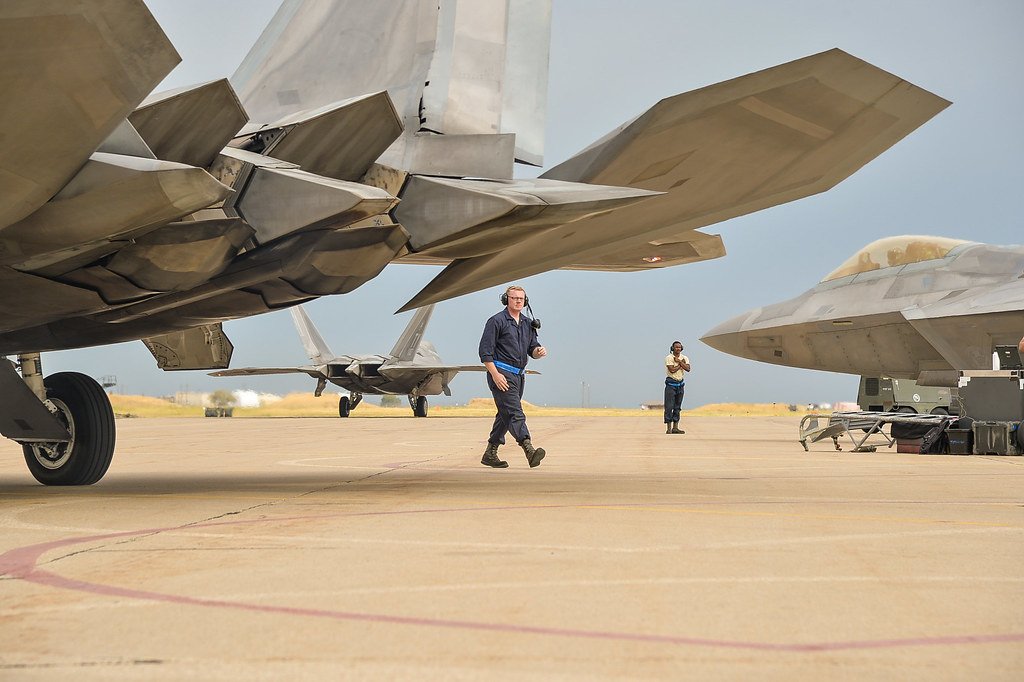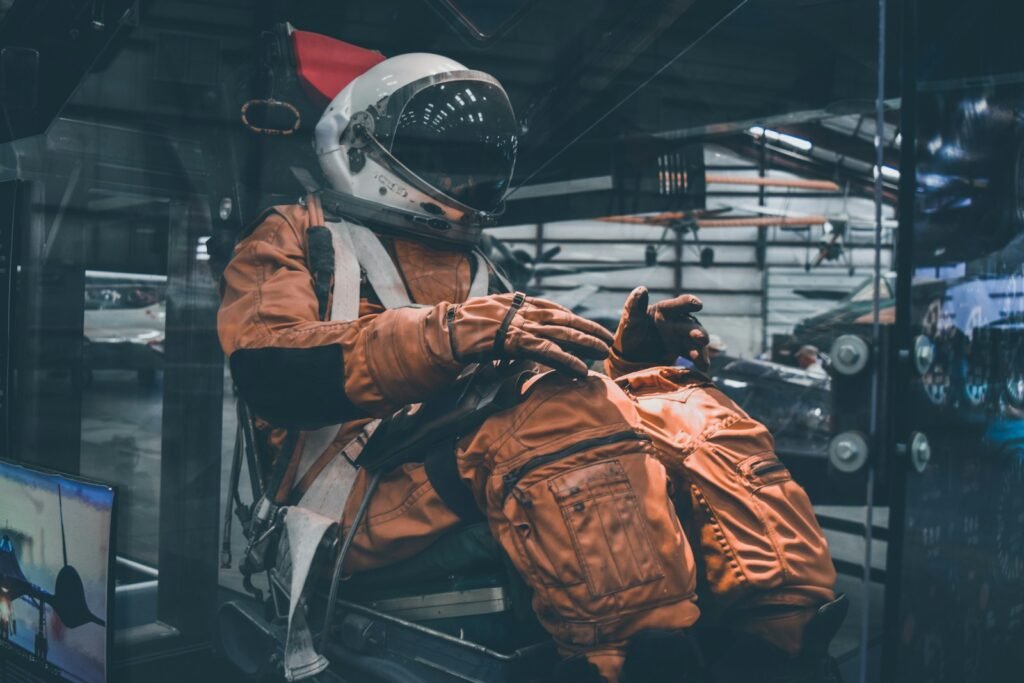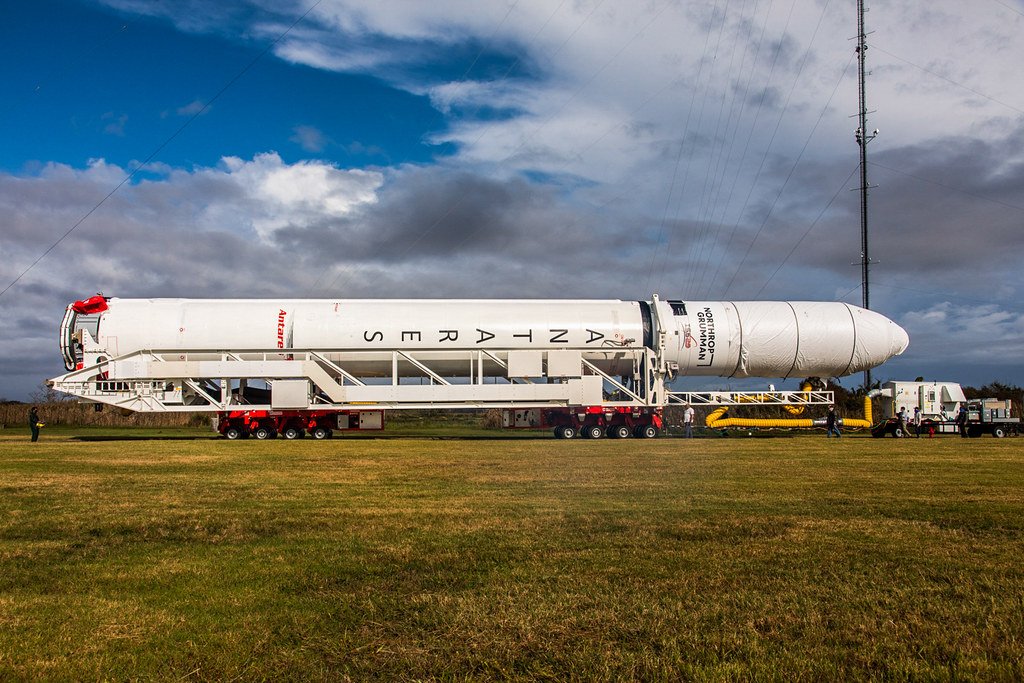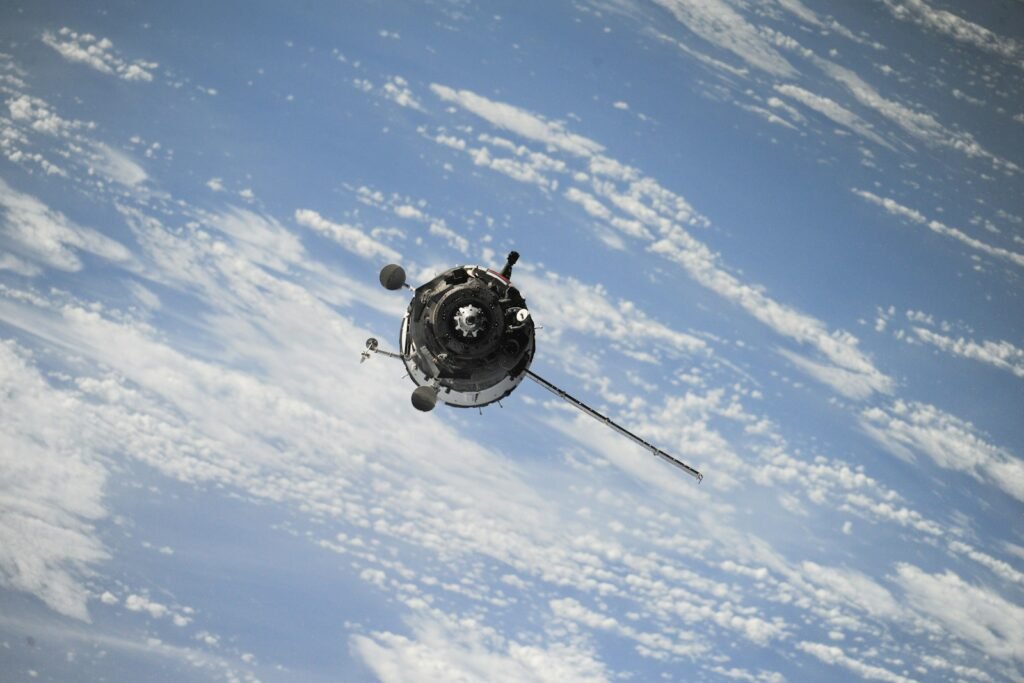Imagine standing 6 feet tall when you blast off into space, only to return to Earth months later measuring slightly shorter than when you left. This isn’t science fiction – it’s the reality astronauts face after extended stays in microgravity. The human body, sculpted by millions of years of evolution under Earth’s gravitational pull, undergoes remarkable changes when removed from the force that has shaped our very existence.
The Shocking Reality of Space-Induced Height Loss

When astronauts return from the International Space Station, they often lose between 1 to 2 inches of height during their first few days back on Earth. This dramatic shrinkage occurs rapidly, sometimes within hours of landing. The process is so predictable that NASA has incorporated it into their post-mission medical protocols.
The height loss isn’t permanent, but it’s a stark reminder of how profoundly space affects the human body. Astronauts who spend six months aboard the ISS typically experience the most significant changes. Some report feeling like they’re walking on stilts when they first attempt to stand after landing.
Gravity’s Invisible Hand on Human Anatomy

On Earth, gravity constantly compresses our spine, acting like an invisible weight pressing down on our vertebrae throughout the day. This compression keeps our spinal discs compact and maintains our “ground-based” height. During sleep, we naturally gain about half an inch as our spine decompresses, but gravity quickly restores our normal height upon waking.
In space, this constant gravitational compression disappears entirely. Without the downward force, the spine begins to elongate as the discs between vertebrae expand. Think of it like removing heavy books from a stack of soft cushions – they naturally puff up to their original size.
The Spine’s Dramatic Transformation in Microgravity

The human spine contains 23 intervertebral discs, each capable of expanding when freed from gravitational pressure. These discs are composed of a gel-like center surrounded by tough, fibrous rings. In microgravity, each disc can expand by several millimeters, creating a cumulative effect that adds significant height to an astronaut’s frame.
Within the first few days in space, astronauts typically grow 2 to 3 inches taller as their spines stretch. This rapid elongation often causes back pain and discomfort as muscles and ligaments adapt to the new skeletal configuration. The sensation is described as feeling like being on a medieval torture rack, but in reverse.
Muscle Atrophy and Its Role in Height Changes

While spinal elongation makes astronauts taller in space, muscle atrophy plays a crucial role in their post-return shrinkage. The deep muscles that support the spine – particularly the erector spinae and multifidus – weaken dramatically during extended periods of weightlessness. These muscles normally work constantly against gravity to maintain posture and spinal alignment.
When astronauts return to Earth, their weakened back muscles struggle to support their elongated spine against gravity’s renewed pull. This muscular inadequacy contributes to the rapid compression and height loss experienced during the first days back on solid ground. The spine essentially collapses under its own weight without proper muscular support.
Bone Density Loss and Structural Changes

Astronauts lose bone density at an alarming rate of 1 to 2 percent per month in space, particularly in weight-bearing bones like the spine and hips. This bone loss occurs because bones constantly remodel themselves based on the stresses placed upon them. Without gravity’s constant loading, bones begin to break down faster than they rebuild.
The vertebrae themselves become more porous and less dense, making them more susceptible to compression upon return to Earth. This structural weakening compounds the height loss as the bones literally compress under gravitational force. Some astronauts describe feeling like their skeleton is made of chalk after long-duration flights.
The Fluid Shift Phenomenon

In space, bodily fluids redistribute dramatically throughout the body, moving from the lower extremities toward the head and torso. This fluid shift affects the spine indirectly by changing the pressure dynamics within spinal tissues. The increased fluid pressure in the upper body can contribute to spinal elongation during the mission.
Upon return to Earth, gravity reasserts its dominance, pulling fluids back toward the lower body. This readjustment affects spinal compression as tissue hydration patterns return to their terrestrial norm. The process is like wringing out a sponge – the spine contracts as fluid distribution normalizes.
Real Astronaut Experiences and Testimonials

Astronaut Scott Kelly, who spent 340 consecutive days in space, experienced significant height changes during his mission. He reported growing approximately 2 inches taller during his stay on the ISS, then rapidly shrinking back to his original height within days of returning to Earth. Kelly described the sensation as feeling like his spine was being “squeezed in a vice.”
Japanese astronaut Norishige Kanai made headlines in 2018 when he mistakenly reported growing 3.5 inches in just three weeks aboard the ISS. While his measurement was later corrected to a more typical 2 inches, his experience highlighted the dramatic nature of space-induced height changes. Many astronauts joke about needing to readjust their car seats and shower heads after returning home.
The Timeline of Post-Flight Shrinkage

The height loss astronauts experience follows a predictable timeline that NASA has extensively documented. Within the first 24 hours after landing, most astronauts lose approximately 50 to 75 percent of their space-gained height. The remaining compression occurs over the following weeks as the spine fully readjusts to gravitational loading.
The initial shrinkage is often accompanied by significant back pain and stiffness. Astronauts frequently describe feeling like they’re being crushed by an invisible weight. Some report difficulty standing upright for extended periods, requiring gradual readjustment to Earth’s gravitational environment.
Countermeasures and Exercise Protocols

NASA has developed sophisticated exercise protocols to combat the effects of microgravity on the human body. The Advanced Resistive Exercise Device (ARED) aboard the ISS allows astronauts to perform weight-bearing exercises that help maintain muscle strength and bone density. However, these countermeasures cannot completely prevent spinal changes.
Astronauts typically exercise 2.5 hours daily, focusing on exercises that load the spine and strengthen supporting muscles. Despite these efforts, some degree of spinal elongation and subsequent compression is inevitable. The exercise protocols have significantly reduced the severity of post-flight adaptations compared to earlier space missions.
Comparing Short-Term vs. Long-Term Missions

The duration of space missions directly correlates with the degree of height changes experienced. Short-duration missions of a few weeks typically result in minimal spinal changes, while long-duration missions of six months or more produce the most dramatic effects. The relationship isn’t perfectly linear – most spinal elongation occurs within the first month of weightlessness.
Astronauts on the Mercury and Gemini programs, which lasted only days or weeks, experienced minimal height changes. In contrast, crew members on the ISS, who typically spend six months in space, undergo significant spinal adaptations. The longest single spaceflight, Valeri Polyakov’s 437-day mission, provided valuable data on extreme long-duration effects.
The Role of Individual Variation

Not all astronauts experience identical height changes, as individual factors play a significant role in spinal adaptation. Age, fitness level, spinal flexibility, and genetic factors all influence how much an astronaut’s spine elongates in space and shrinks upon return. Younger astronauts typically experience more dramatic changes than their older counterparts.
Some astronauts are naturally more flexible and experience greater spinal elongation, while others with stiffer spines show more modest changes. Pre-flight spinal health also matters – astronauts with previous back injuries may experience different adaptation patterns. These individual variations make it challenging to predict exact outcomes for each crew member.
Medical Monitoring and Assessment

NASA employs sophisticated medical monitoring to track astronauts’ spinal changes throughout their missions. Ultrasound devices aboard the ISS allow real-time measurement of spinal length and disc thickness. These measurements help doctors understand the progression of changes and adjust countermeasures accordingly.
Pre-flight and post-flight MRI scans provide detailed images of spinal structure and disc health. These medical assessments have revealed that while height changes are dramatic, most astronauts experience no permanent spinal damage. The monitoring protocols have been refined over decades of spaceflight to ensure crew safety and health.
Implications for Future Mars Missions

The height changes experienced by astronauts have significant implications for future long-duration missions to Mars. A round-trip journey to Mars would likely last 18 to 24 months, potentially causing more extreme spinal adaptations than currently observed. Mission planners must consider how these changes might affect crew performance and equipment design.
Spacecraft and habitat designs for Mars missions must accommodate astronauts’ changing heights throughout the journey. Sleeping quarters, control interfaces, and spacesuits may need adjustable features to accommodate crew members who could be several inches taller during the mission. These considerations add complexity to already challenging mission planning.
The Psychological Impact of Physical Changes

Beyond the physical effects, astronauts often experience psychological impacts from their dramatic height changes. The sensation of growing taller in space can be disorienting, while the rapid shrinkage upon return can be emotionally challenging. Some astronauts report feeling like their body is no longer their own during the readjustment period.
The temporary nature of these changes provides some comfort, but the dramatic physical transformation serves as a constant reminder of how alien the space environment truly is. Many astronauts describe feeling disconnected from their terrestrial bodies during the initial days of readjustment. Support systems and counseling help crew members cope with these profound physical changes.
Technological Solutions and Future Innovations

Engineers and medical researchers are developing innovative solutions to minimize the effects of microgravity on the human body. Artificial gravity systems, created through rotation, could theoretically maintain normal spinal compression during long-duration flights. However, these systems remain largely theoretical for practical spacecraft applications.
Advanced exercise equipment continues to evolve, with newer devices providing better spinal loading than previous generations. Vibration platforms and pneumatic resistance systems show promise for maintaining bone density and muscle strength. Future missions may employ combination approaches using multiple technologies to preserve crew health.
Recovery and Rehabilitation Protocols

Upon return to Earth, astronauts undergo extensive rehabilitation to help their bodies readjust to gravity. Physical therapy focuses on strengthening spinal support muscles and improving flexibility. The rehabilitation process typically takes several weeks to months, depending on mission duration and individual factors.
Specialized exercises target the deep stabilizing muscles that atrophy during weightlessness. Aquatic therapy provides a gentler environment for initial movement, allowing astronauts to gradually readjust to gravitational forces. Most astronauts return to their pre-flight height within weeks, though some residual effects may persist for months.
Scientific Research and Data Collection

The height changes experienced by astronauts provide valuable scientific data about human adaptation to extreme environments. Research conducted on the ISS has advanced our understanding of bone metabolism, muscle physiology, and spinal biomechanics. These studies benefit not only space medicine but also terrestrial treatments for osteoporosis and spinal disorders.
Ongoing research continues to refine our understanding of microgravity’s effects on the human body. Each mission provides new data points that help scientists develop better countermeasures and prediction models. The knowledge gained from astronaut experiences contributes to broader medical understanding of human physiology.
The Broader Context of Human Space Adaptation

Height changes represent just one aspect of how the human body adapts to spaceflight. The cardiovascular system, inner ear, and immune function all undergo significant modifications in microgravity. Understanding these interconnected changes is crucial for ensuring astronaut safety and mission success.
The human body’s remarkable adaptability to space environments demonstrates both our species’ resilience and our fundamental connection to Earth’s gravitational environment. These adaptations remind us that we are truly children of our planet, shaped by forces that have molded our evolution for millions of years.
Conclusion

The phenomenon of astronauts shrinking after returning to Earth reveals the profound impact of gravity on human physiology. While the height changes are temporary and generally harmless, they serve as a powerful reminder of how intimately connected we are to our planetary environment. As we venture further into space, understanding and managing these adaptations becomes increasingly critical for mission success.
The research conducted on astronaut height changes has advanced our knowledge of human biology and contributed to medical treatments on Earth. Each mission provides valuable data that helps prepare for future long-duration spaceflight and eventual human settlement of other worlds. The courage of astronauts who undergo these dramatic physical changes continues to expand the boundaries of human knowledge and capability.
What other invisible forces might be shaping our bodies in ways we haven’t yet discovered?



